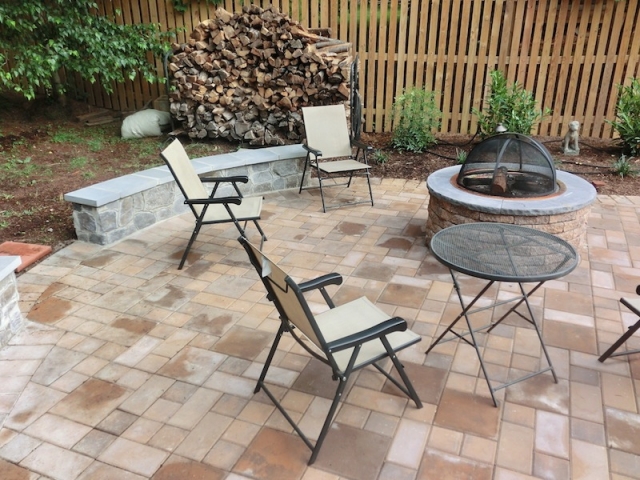Brick Pavers
Brick patio pavers may not have all the cache of the more expensive materials, but when it comes to expressing your personality, these little guys are hard to beat. Some brick paver patterns are so popular that they have taken on descriptive names of their own: herringbone, basket weave and Jack-on-Jack are just the starters. Laying down a pattern with brick patio pavers is a job best left to the professionals because when you reach the end of the line it may require a very clean cutting of the brick in order to complete the pattern with aesthetics intact.
Tile Pavers
Tile pavers for outdoor use in patio design are generally unglazed and significantly thicker than those the tiles you would find on the floor of your kitchen. What this means for patio pavers is that tile can actually be much more durable than some people might expect. Of course, tile patio pavers also lean heavily toward the more expensive side of outdoor landscape design, but over the long term that durability may actually wind up saving you money. Keep in mind that it may be necessary for tile patio pavers to be precisely cut in order to keep the pattern intact. Replacement tiles and a tile cutting tool is therefore worth consideration.
Flagstone
Flagstone is the traditional type of stone used for patio pavers and one of the reasons for its continued popularity is the creativity it affords. Since flagstones pavers are already irregularly shaped, this typically removes the necessity for cutting to complete a pattern like you may run into with when you use brick or tile. Think of flagstone patio pavers like a great bit jigsaw puzzle that you can put together to create any image you want. You can space flagstone pavers right up next to each other or allow for big spaces between individual stones. This attribute makes flagstone a great choice as a patio paver for the homeowner who wants to experiment, but probably not so great for the homeowner who just wants the job done quickly.
Concrete
That type of person lesson concerned with stylistic flourishes, intricate design and decision-making will first want to consider concrete patio pavers. Concrete pavers are certainly nestled near the top of the list when it comes to efficiency during the design process and durability for the long term. The simplest use of concrete patio pavers involves nothing more complex than pouring, spreading and tamping of the concrete. Of course, concrete can also be used to create a very stylish patio sensation as well. Concrete does crack over time, and it is not so simple to replace one portion of the patio if this does happen.
To find out more about how we can transform your patio with the pavers of your choice, please Contact Us.

